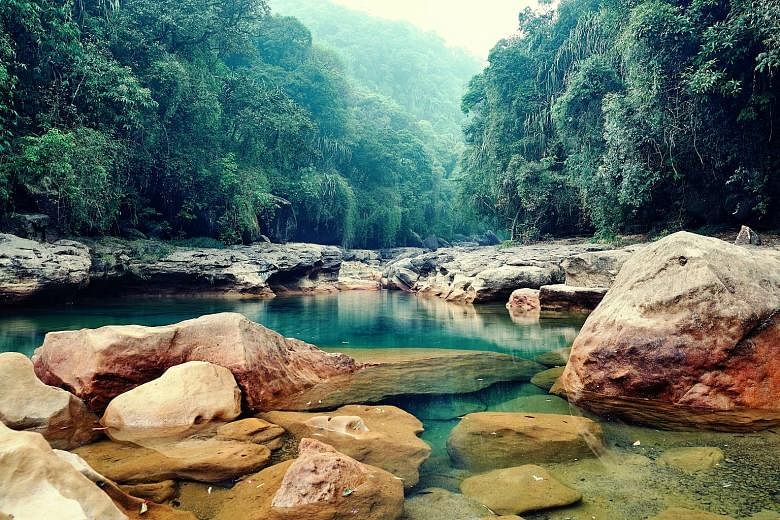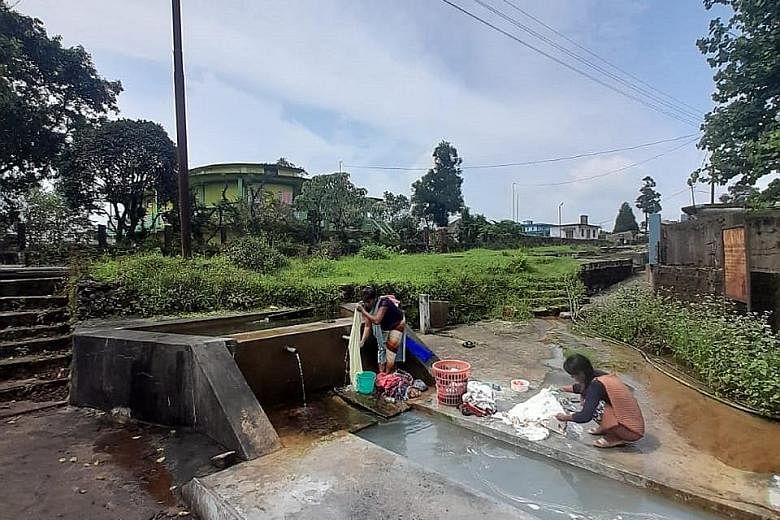Mr Tyngshainlang Dewkhaid lives in Mawsynram, a place described as the wettest on earth. With an average annual rainfall of almost 12m, this hilly region in India's north-eastern state of Meghalaya should have more than enough water to meet local residents' needs.
Yet, Mr Dewkhaid, 48, and his family struggle to get water in Phlangwanbroi, a village in the Mawsynram area.
This is basically because of the region's elevated topography, which causes greater run-off. Over the years, however, water scarcity has been exacerbated by growing deforestation, which has reduced water retention in the soil. Wider climate change-linked factors have also contributed to less rainfall.
This crisis is widespread in other parts of the East Khasi Hills district, one of the world's wettest regions, especially in Cherrapunji (or Sohra, as it is now known), which held the distinction of having the highest annual rainfall until Mawsynram snatched that title.
Singapore, in comparison, receives less than a fifth of this region's annual rainfall, at around 2.16m.
The problem is acute during the dry season from December to March, when the Dewkhaids spend around four hours every day collecting water from public taps in their village that deliver little more than a trickle and nearby streams that are fast thinning out.
Over the years, the situation has become worse.
"Students who queue up are unable to finish their homework and cannot go to school on time," Mr Dewkhaid, a local school teacher, told The Straits Times.
On July 25, the state and central governments jointly inaugurated a water supply scheme for Sohra town and 12 other settlements, covering a total population of around 23,000. An afforestation initiative was also launched to plant one million trees in 1,000ha in this region in the next three years.
Deforestation is a major concern in Sohra, a direct fallout of its growing population and activities such as agriculture, as well as a historic iron smelting industry here that has relied on charcoal for fuel.
With reduced vegetation, much of the rainwater runs down from Sohra, which is located on the edge of a plateau, carrying along with it vast amounts of top soil into adjacent Bangladesh.
"Deforestation, combined with heavy rainfall, has left the topsoil in many parts of Sohra too thin to support any natural vegetation but grasses," said Dr Varun Goswami, co-founder of Conservation Initiatives. It is a science-based nature conservation organisation with its headquarters in Shillong, the capital of Meghalaya. "Unless we conserve and ecologically restore native woodlands, the soil in time may become so thin that even grasses may not grow," he added.
Poor topsoil is already hampering afforestation efforts, with trees barely able to take hold. "They do not get the nutrients they need for their growth. Even after one to two years, they look like seedlings," said Mr Bansan Lyngdoh, 38, a tourism entrepreneur.
In January, a published analysis of rainfall data from 1901 to 2019 in India's north-east showed a significant reduction in rainfall here.
Among the reasons cited for this decrease, which has been substantial in the past two decades, are changes in Indian Ocean temperatures and conversion of vegetation cover to croplands. North-east India is mostly hilly and highly sensitive to changes in regional and global climate, the study said.
In Mr Lyngdoh's village, Mawmluh, which has a population of around 1,800, villagers have no access to government water supply. They depend on streams and a canal built by locals, which channels water from a perennial river.
The village has around 30 public taps but they have been dry for more than 10 years as local sources they relied on have dried out.
Mr Lyngdoh runs a tourist guest house and has to buy around 4,000 litres of water daily, brought in by tankers at a cost of 30,000 rupees (S$545) every month.
Setting up large communal rainwater tanks and widespread afforestation could help tackle the crisis, said locals.
Mr Dewkhaid said: "As soon as you protect the forests, the streams will not run out of water. They will remain there for months."


